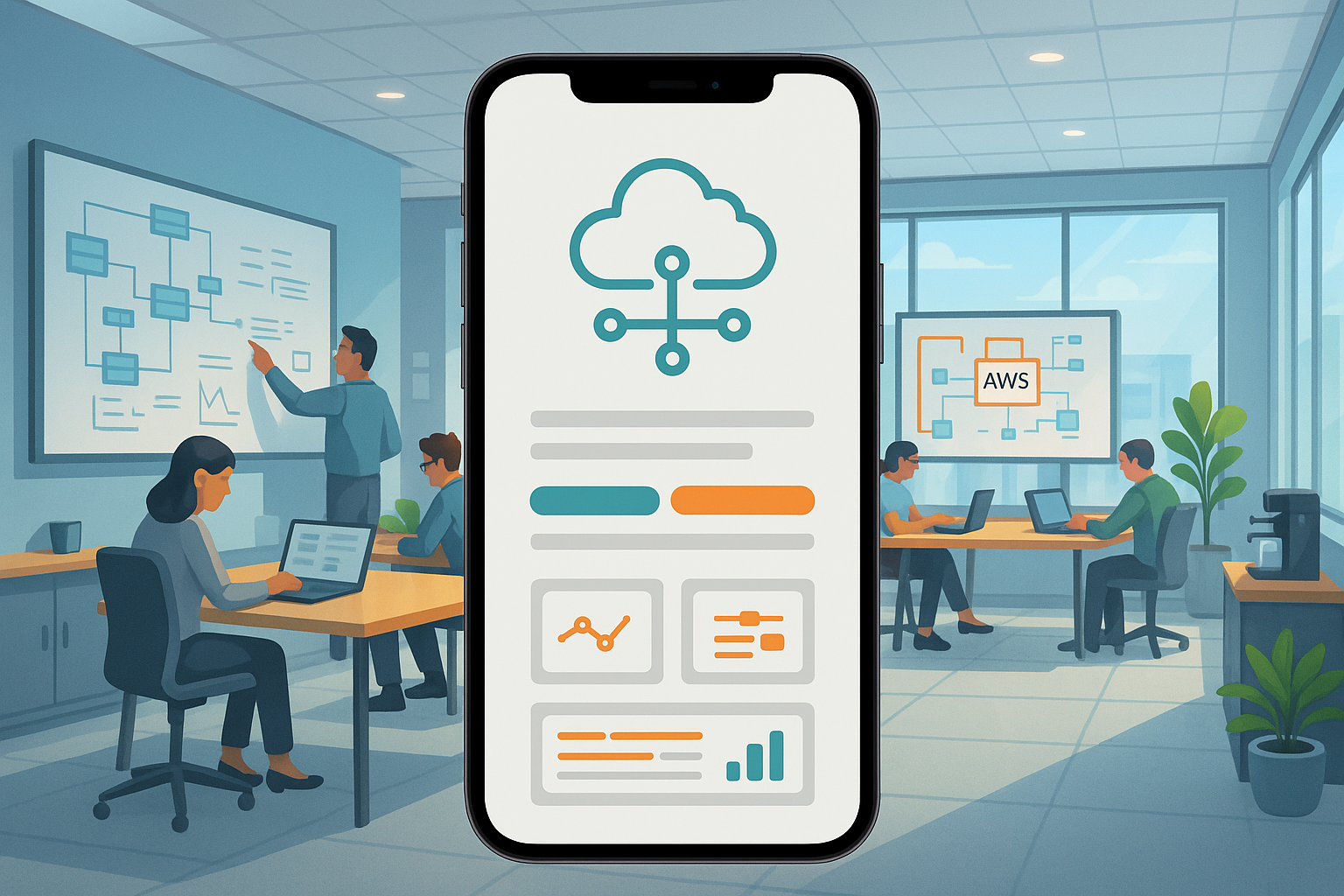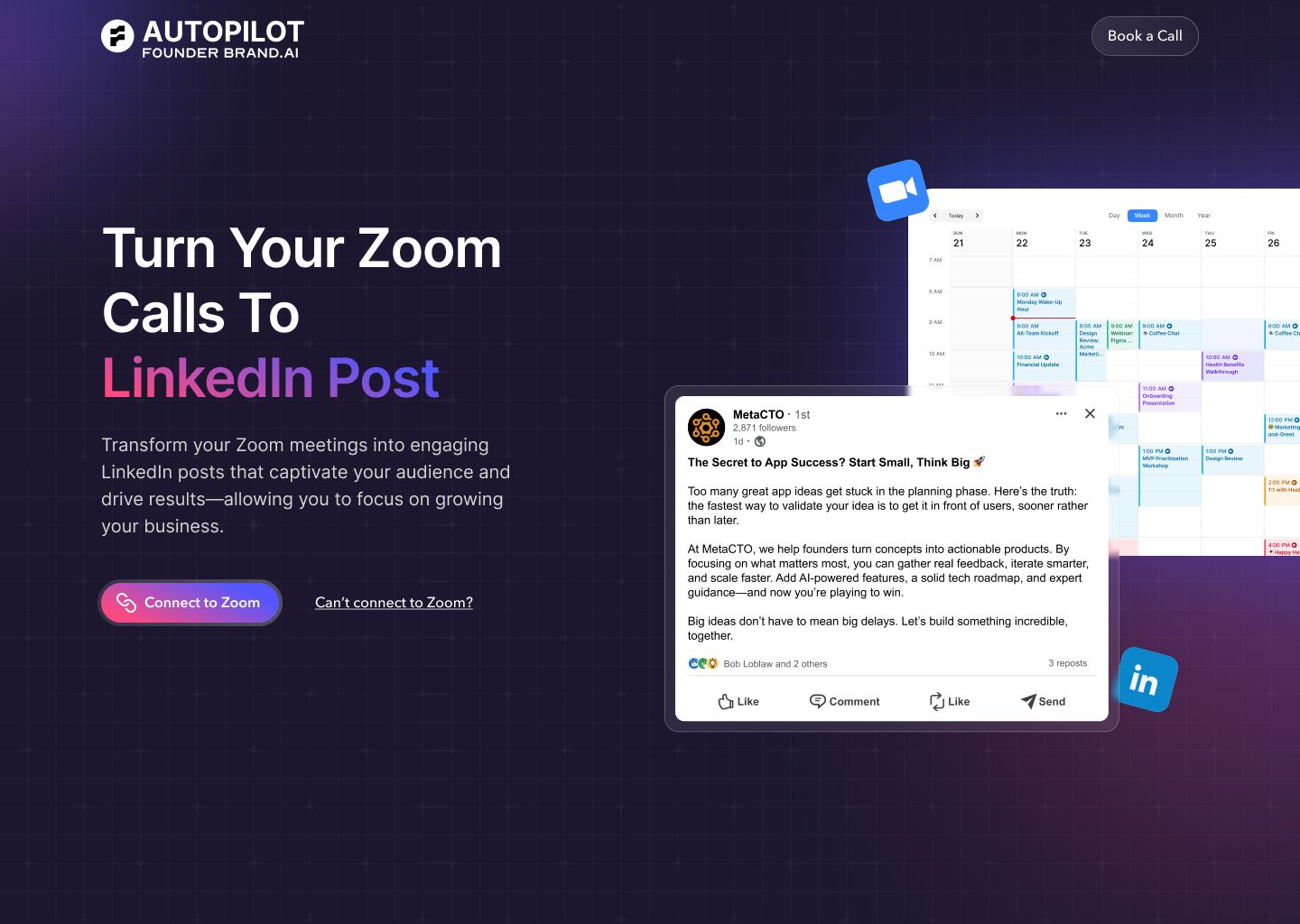Introduction
Amazon Web Services (AWS) represents the pinnacle of cloud computing, offering an unparalleled suite of tools and services to build, deploy, and scale applications. The allure of its power is undeniable; however, the path to launching a successful AWS application is fraught with complexities that can derail even the most promising projects. From spiraling, unpredictable costs to the intricate architectural decisions required for modern, scalable systems, developing an AWS app in-house can quickly become a significant drain on resources, time, and focus. Many organizations find themselves reacting to cost-related incidents and billing complexity rather than proactively building innovative products.
This article serves as a comprehensive guide to understanding the world of AWS app development. We will delve into what defines an AWS application, explore the substantial reasons why in-house development is so challenging, and outline the critical architectural patterns that form the backbone of modern cloud-native systems. Furthermore, we will dissect the elusive nature of AWS development costs and introduce you to the top AWS app development companies that can serve as your strategic partner.
As a leading AI-powered mobile app development firm in the U.S., we at MetaCTO have guided numerous clients through this exact journey. We’ve seen firsthand how the power of AWS, when harnessed correctly, can transform a business. We combine our deep technical expertise with a strategic, business-focused approach to turn ambitious ideas into market-leading applications. This guide distills our experience to provide you with the clarity needed to make informed decisions, highlighting how partnering with a dedicated agency like ours can mitigate risks and accelerate your path to success.
What is an AWS App?
At its core, an AWS application is a software solution implemented using the vast ecosystem of AWS services. However, this simple definition belies the sophisticated design philosophy that underpins a truly modern cloud-native application. These are not merely traditional applications hosted on a cloud server; they are architected from the ground up to leverage the full potential of the cloud.
AWS applications are designed based on well-architected best practices and are intentionally built as modern applications, free from the constraints and technical debt of legacy systems. The predominant architectural style used is the microservices architecture. This approach contrasts sharply with traditional monolithic applications, which typically run as a single process, rely on a single data store, and scale vertically by adding more power to a single server.
Modern microservice applications built on AWS are fundamentally different:
- Fine-Grained and Independent: They are composed of small, independent services that run in their own processes and communicate across a network. This modularity improves release velocity, as teams can update individual services without redeploying the entire application. It also reduces the scope of impact for any changes or failures, as each service has an independent fault domain.
- Horizontally Scalable: Instead of making a single server more powerful (vertical scaling), AWS applications scale horizontally by adding more instances of a service. This allows for massive scalability and resilience, as traffic can be distributed across numerous instances.
- Polyglot Persistence and Code: Microservices architectures support using the best technology for each specific job. This means development teams can utilize different programming languages for different services (polyglot code) and select various types of databases and data stores best suited to a service’s specific needs (polyglot persistence).
- Accelerated Development: By providing specific AWS implementations for common architectural patterns, AWS helps standardize and accelerate development. Teams can leverage managed services for databases, messaging, authentication, and more, rather than building everything from scratch.
When developing applications using microservices on AWS, teams must shift their focus to new considerations, including robust network communication between services, managing polyglot persistence, engineering for horizontal scaling, designing for eventual consistency across distributed data stores, and handling transactions that span multiple services.
Reasons It Is Difficult to Develop an AWS App In-House
While the benefits of AWS are clear, the path to achieving them is laden with challenges, particularly for teams managing development in-house. These difficulties span financial, technical, and organizational domains, creating a complex web of issues that can stifle innovation and lead to significant waste.
Financial Challenges and Billing Complexity
One of the most immediate and persistent challenges of using AWS is cost management. The pay-as-you-go model, while flexible, introduces a level of financial uncertainty that most organizations are unequipped to handle.
- Impossible Forecasting: Traditional finance models, which rely on signing off on expenses before they occur, are fundamentally challenged by the AWS cloud. Costs are variable and dynamic, making it nearly impossible for teams to predict them accurately and determine a budget up-front. Even with well-understood usage habits, cloud expenses for complex applications are extremely hard to forecast.
- Billing Obscurity: The AWS bill itself is a source of major frustration. A monthly Cost and Usage Report (CUR) can contain billions of line-items for large businesses. It often includes several rows for the very same AWS asset, each representing different cost components. It takes a monumental effort to decipher this report and create a transparent bill that all stakeholders can understand. This complexity is compounded by continually evolving pricing policies.
- Unexpected Costs: Teams are often blindsided by extraordinarily high operating expenses. These surprises can come from services with per-request charging models or from high-volume logging, metric compilation, and data outflow—costs that are not always obvious during the design phase.
Technical and Operational Hurdles
Beyond the financial strain, the technical and operational overhead of managing a sophisticated AWS environment is substantial.
- Architectural Trade-offs: Every architectural decision on AWS involves a compromise, most notably between reliability and cost. Designing a highly available, fault-tolerant system is expensive, and engineers must constantly make judgment calls that balance performance with budget.
- Required Engineering Commitment: Identifying and acting on cost-saving opportunities requires significant engineering commitment. This work competes directly with feature development, and development teams are naturally incentivized to focus on building the product itself, not on optimizing its underlying infrastructure costs.
- Manual Management Overhead: Without sophisticated automation, staying on top of AWS costs is a time-consuming and error-prone manual process. It involves manually tracking down forgotten instances, writing and deploying custom scripts to manage resources, and painstakingly comparing monthly bills to spot anomalies.
- The Need for Deep Expertise: Simply put, designing reliable and secure solutions on AWS requires well-educated architects. The platform is vast and constantly evolving. Without expert guidance, teams risk building insecure, inefficient, or excessively expensive applications. Our Fractional CTO service provides this essential architectural oversight without the cost of a full-time executive.
Organizational Blind Spots
Often, the biggest hurdles are not technical but organizational. The very structure of many companies creates blind spots that lead to rampant inefficiency.
- Lack of Visibility: In large organizations, application teams rarely have full visibility into the cloud expenses they generate. Permissions to access the AWS billing console are often restricted, leaving developers in the dark about the cost implications of their work. This is made worse by complex pricing structures like reserved instances and subsidized rates, which obscure the true cost of a resource.
- Attribution Problems: It can be impossible to attribute AWS expenses to the right business segments without a clear account process and tagging strategy implemented in advance. Without proper attribution, no single team or department feels the full weight of their consumption.
- Pervasive Resource Waste: A lack of visibility and accountability, combined with a company-wide focus on innovation and growth, leads to great waste. Development and testing environments are frequently left running 24/7, even when only needed during business hours. Resources provisioned for a specific project are not terminated when the project ends because teams are focused on the next task, not on cleanup.
- Decentralized Accountability: The decentralization of IT facilitated by the cloud is a double-edged sword. Without correct visibility and control mechanisms, it can result in a complete lack of accountability for costs. Until recently, managing cloud costs was not a defined responsibility for most roles in a company, and this issue often flies under the radar until the executive team mandates a dramatic change after a major cost-related incident.
Common Architectural Patterns for AWS Apps
To manage the complexity of modern applications and accelerate delivery, development teams rely on established architectural patterns. These patterns are like blueprints for solving recurring problems in distributed systems. AWS applications make extensive use of these patterns, often with specific AWS services providing out-of-the-box implementations.
The foundational choice is often between a monolith and a microservices architecture. As discussed, modern AWS applications overwhelmingly favor microservices to achieve scalability and improve release velocity. Building with microservices requires a focus on network communication, polyglot persistence, horizontal scaling, and eventual consistency.
Within a microservices environment, numerous other patterns are employed to handle specific challenges. These modernization patterns are critical for accelerating software delivery. Here are some of the most common architectural patterns used in AWS application development:
| Pattern | Description |
|---|---|
| Anti-corruption Layer | An isolating layer that prevents a modern application’s design from being tainted by the complexities of a legacy system it integrates with. |
| API Routing Patterns | A set of patterns for an API gateway to route incoming requests to the correct downstream service based on factors like the hostname, URL path, or HTTP headers. |
| Circuit Breaker | A pattern that prevents an application from repeatedly trying to execute an operation that is likely to fail, allowing it to fail fast and prevent system-wide cascading failures. |
| Event Sourcing | A pattern where all changes to an application’s state are stored as a sequence of events, rather than just storing the current state. This provides a full audit log and enables powerful analytics. |
| Hexagonal Architecture | Also known as Ports and Adapters, this pattern decouples the core application logic from external concerns like databases, UIs, or third-party APIs. |
| Publish-Subscribe | A messaging pattern where “publishers” send messages to a topic, and “subscribers” receive messages from that topic, decoupling the producers of information from the consumers. |
| Retry with Backoff | A resilience pattern where a client retries a failed operation after waiting for a progressively longer period, preventing it from overwhelming a temporarily unavailable service. |
| Saga Patterns | A pattern to manage long-running transactions that span multiple microservices. This can be done via Saga Choreography (where services publish events) or Saga Orchestration (where a central coordinator manages the steps). |
| Scatter-Gather | A messaging pattern used to query multiple services for information and aggregate the responses. |
| Strangler Fig | A pattern for incrementally migrating a legacy monolithic application to a microservices architecture by gradually replacing pieces of functionality with new services. |
| Transactional Outbox | A pattern that ensures an event or message is reliably published after a database transaction is committed, preventing data inconsistencies in distributed systems. |
Understanding the Costs of AWS App Development
A common question we receive is, “How much will it cost to develop our AWS app?” The direct answer is that providing a precise, up-front cost estimate is impossible. The very nature of the cloud’s pay-as-you-go model means costs are directly tied to consumption, which can fluctuate dramatically based on user traffic, data processing needs, and the specific architecture of the application.
Instead of a fixed price tag, it is more productive to understand the factors that drive cost. Acknowledging these variables is the first step toward building a cost-effective solution.
- Resource Consumption: This is the most significant cost driver. It includes compute power (EC2 instances, Lambda functions), storage (S3 buckets, EBS volumes), and data transfer. This is precisely why forgotten dev/test environments or un-terminated project resources lead to so much waste—you pay for them whether they are actively being used or not.
- Service Choices: AWS offers over 200 services, each with its own pricing model. Some charge per hour, others per request, and others by the gigabyte. Choosing a service without fully understanding its pricing model can lead to significant and unexpected bills. For example, a high-volume application using a service with a per-request model can quickly become expensive.
- Operational Overhead: The “sticker price” of AWS services doesn’t include the human cost of managing the environment. This includes the engineering commitment required for cost-saving initiatives and the time spent on manual, error-prone tasks like tracking down forgotten resources or comparing bills. This operational drag is a hidden but substantial expense.
- Complexity and Scale: As an application becomes more complex and its user base grows, costs will naturally increase. However, this growth is not always linear. A well-architected application can scale cost-efficiently, while a poorly designed one can see costs spiral out of control as it scales.
- Lack of Optimization: An AWS environment is not a “set it and forget it” system. Without continuous monitoring and optimization, costs will inevitably bloat. This requires dedicated time from engineers who are typically focused on building new features.
Partnering with an expert team can transform this uncertainty into a predictable strategy. At MetaCTO, we focus on cost from day one, helping you design an architecture that is not only scalable and reliable but also cost-effective. Through services like our Rapid MVP Development, we ensure your initial build is lean and optimized for your budget.
Top AWS App Development Companies
Choosing the right partner is the single most critical decision you will make in your AWS development journey. A true partner brings more than just coding skills; they provide strategic guidance, architectural expertise, and a clear path through the financial and operational complexities of the cloud.
1. MetaCTO
As a premier mobile app development agency specializing in AI-powered solutions, we at MetaCTO are uniquely positioned to guide you through the complexities of AWS development. With over 20 years of app development experience and more than 120 successful projects launched, we understand that building a great product requires a holistic approach that balances cutting-edge technology with sound business strategy.
We tackle the challenges of cost management, architectural complexity, and speed-to-market head-on. Our process is designed to de-risk your project and maximize your return on investment:
- Validate & Strategize: We don’t just build; we start by validating your idea. With our 90-day MVP service, we can take you from concept to a market-ready application quickly, allowing you to test with real users and secure investor funding on a tight budget and timeline.
- Build & Launch: We handle the entire process—from design and architecture to development and launch—ensuring your app is built on a solid, scalable AWS foundation. Our expertise in AI development allows us to integrate powerful machine learning and data analysis capabilities directly into your application.
- Grow & Evolve: Launch is just the beginning. We help you grow your user base and ensure your app evolves with your business, leveraging analytics and the latest tech to keep you competitive.
Our team acts as a true partner, providing the deep technical guidance needed to build a technology and AI roadmap that will not only solve immediate challenges but also increase your company’s long-term profit and valuation.
Other Leading AWS Partners
The AWS ecosystem is home to many talented consulting firms. Here are some of the other top partners who provide specialized services for companies building on AWS:
| Company Name | AWS Partner Status | Specialization/Focus | Example Client Work |
|---|---|---|---|
| nClouds | Premier Tier Services Partner | High-performance cloud solutions, migrations, and modernizations. | Helped Alation modernize its application and maintain production reliability on AWS. |
| ClearScale | Premier Consulting Partner | AWS infrastructure and application development. | Built out the AWS infrastructure powering The Globe and Mail’s recommendation engine. |
| Slalom Consulting | Partner | Business and technology consulting. | Helped the American Cancer Society find breast cancer patterns with machine learning on AWS. |
| Cloudticity | Partner | Building, migrating, and managing HIPAA-compliant healthcare applications on AWS. | Re-architected Caredove’s site and migrated it to AWS in less than 90 days. |
| Mission Cloud | Managed Services Partner | Architecting, deploying, managing, and optimizing cloud technology. | Helped Webconnex transition to a Kubernetes system on AWS. |
| AllCloud | Partner | Cloud enablement and transformation tools. | Helped Skale Fintech scale to new levels of growth and security with AllCloud Engage on AWS. |
| Thoughtworks | Partner | Digital transformation and software development. | Migrated Atlassian’s core product, Bitbucket, to AWS. |
| Stratus10 | Advanced Consulting Partner | Infrastructure and application migration to the cloud. | Assisted Advent Resources with their mid-migration to AWS. |
| Redapt | Global Systems Integrator | Cloud infrastructure and engineering services. | Helped MiraSMART Conferencing improve developer productivity using AWS. |
| Navisite | Partner | Cloud migration and managed services. | Helped Penske Australia & New Zealand save $80,000 annually with an Oracle to AWS cloud migration. |
Conclusion
Building an application on AWS offers a world of opportunity, enabling unprecedented scalability, resilience, and innovation. However, as we’ve explored, the journey is filled with significant challenges. AWS applications are sophisticated systems built on modern microservices principles and complex architectural patterns. Attempting to navigate this landscape in-house without specialized expertise often leads to crippling financial surprises, pervasive resource waste, and technical roadblocks that stall progress. The complexity of AWS billing, the difficulty in forecasting costs, and the need for constant, expert-led optimization make it a formidable undertaking.
By understanding what an AWS app truly is—a modern, distributed system—and by acknowledging the common pitfalls, you can begin to formulate a strategy for success. This strategy must account for the architectural trade-offs, the operational overhead, and the organizational blind spots that frequently derail internal projects. The key is to move from a reactive to a proactive stance, designing for cost-efficiency and scalability from the very first line of code.
Navigating the world of AWS app development requires more than just technical skill; it requires a strategic partner who can manage costs, design for scale, and get your product to market efficiently. If you’re ready to build your app the right way, from day one, we’re here to help.
Talk with an AWS app development expert at MetaCTO today to transform your vision into a successful, market-ready application.






